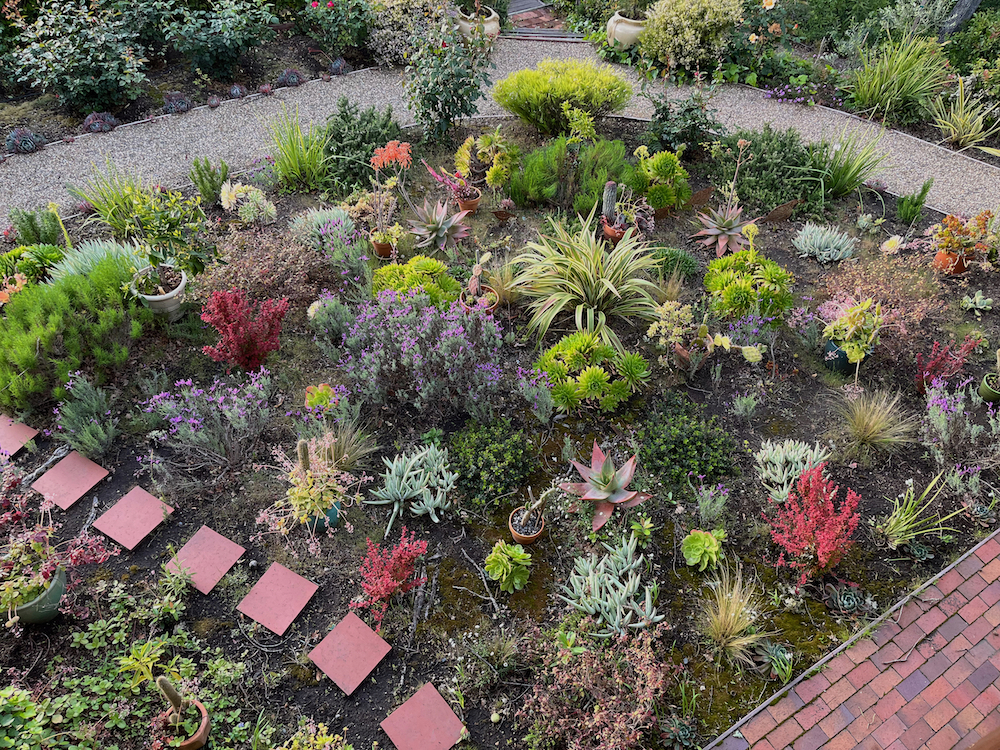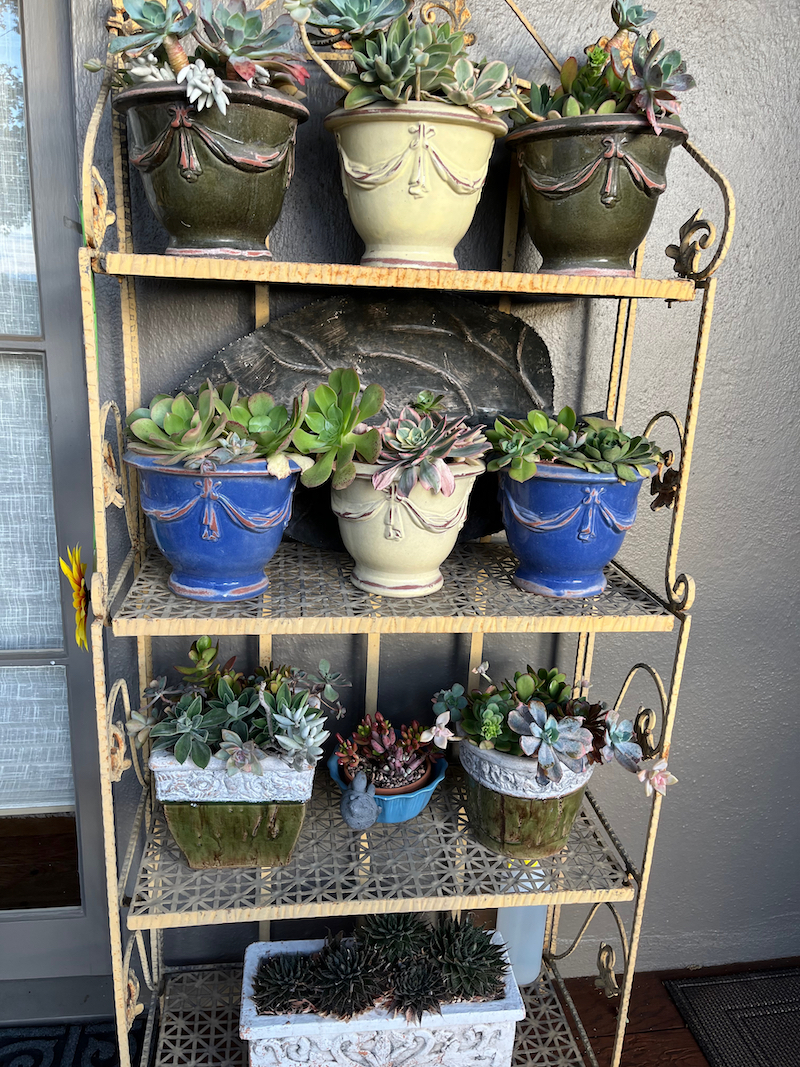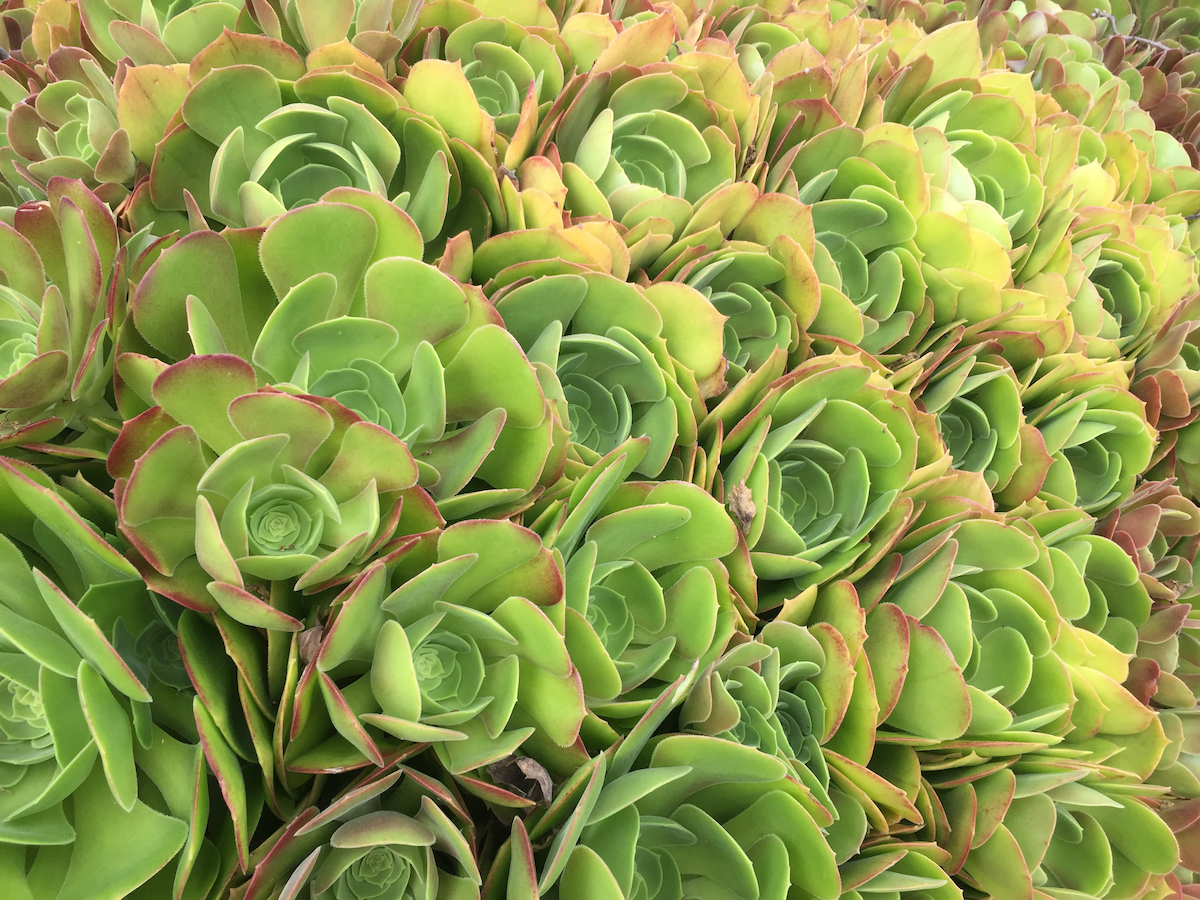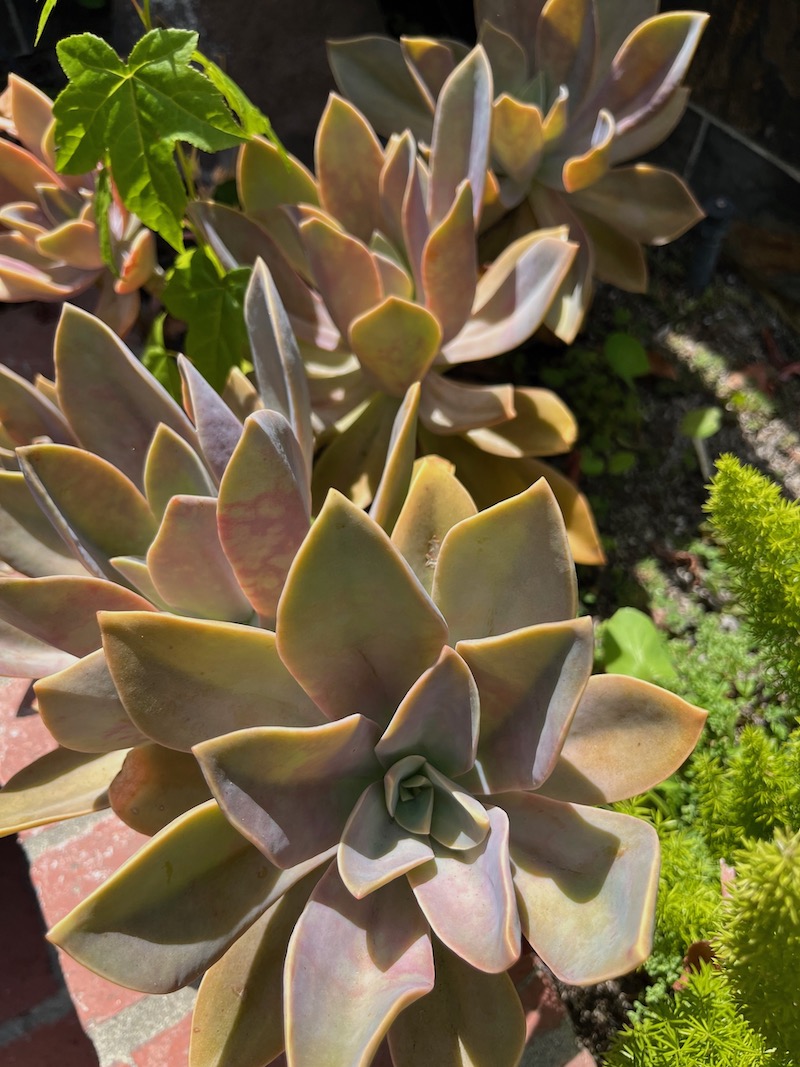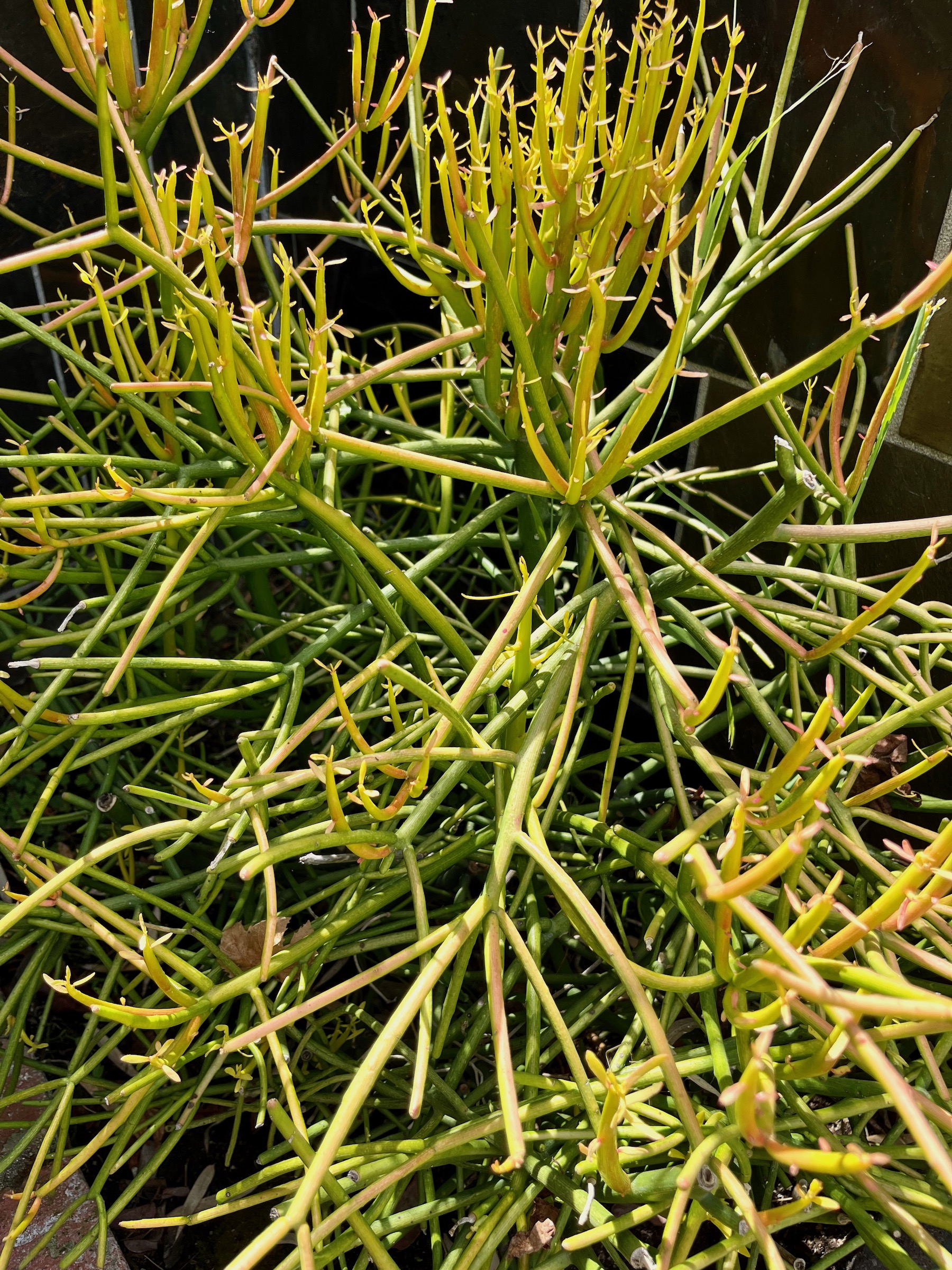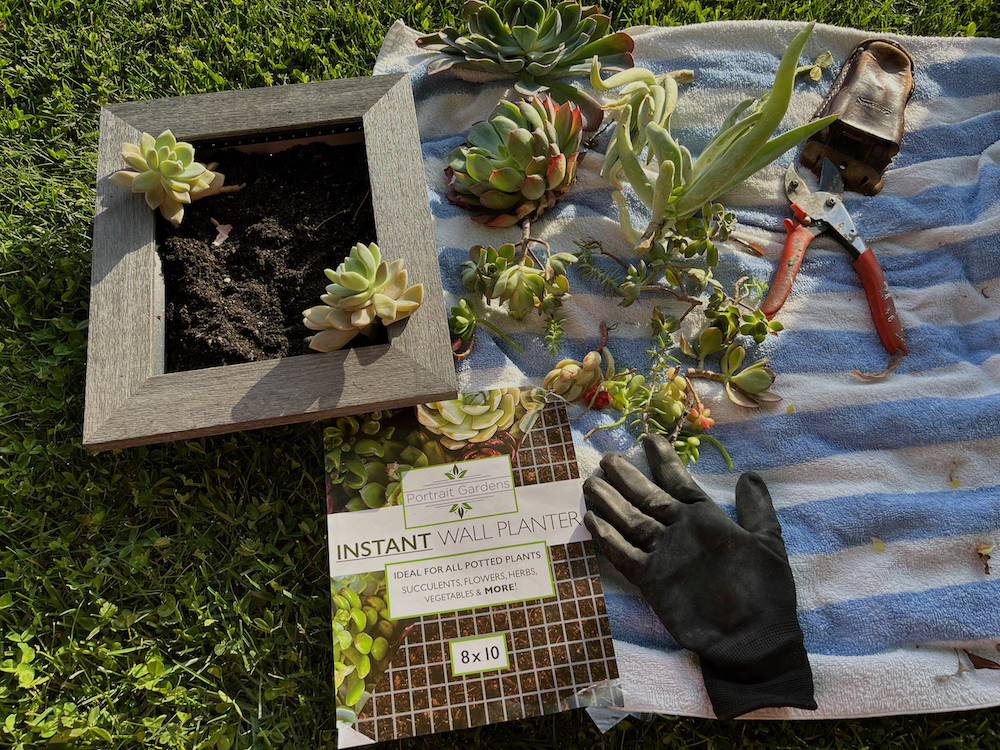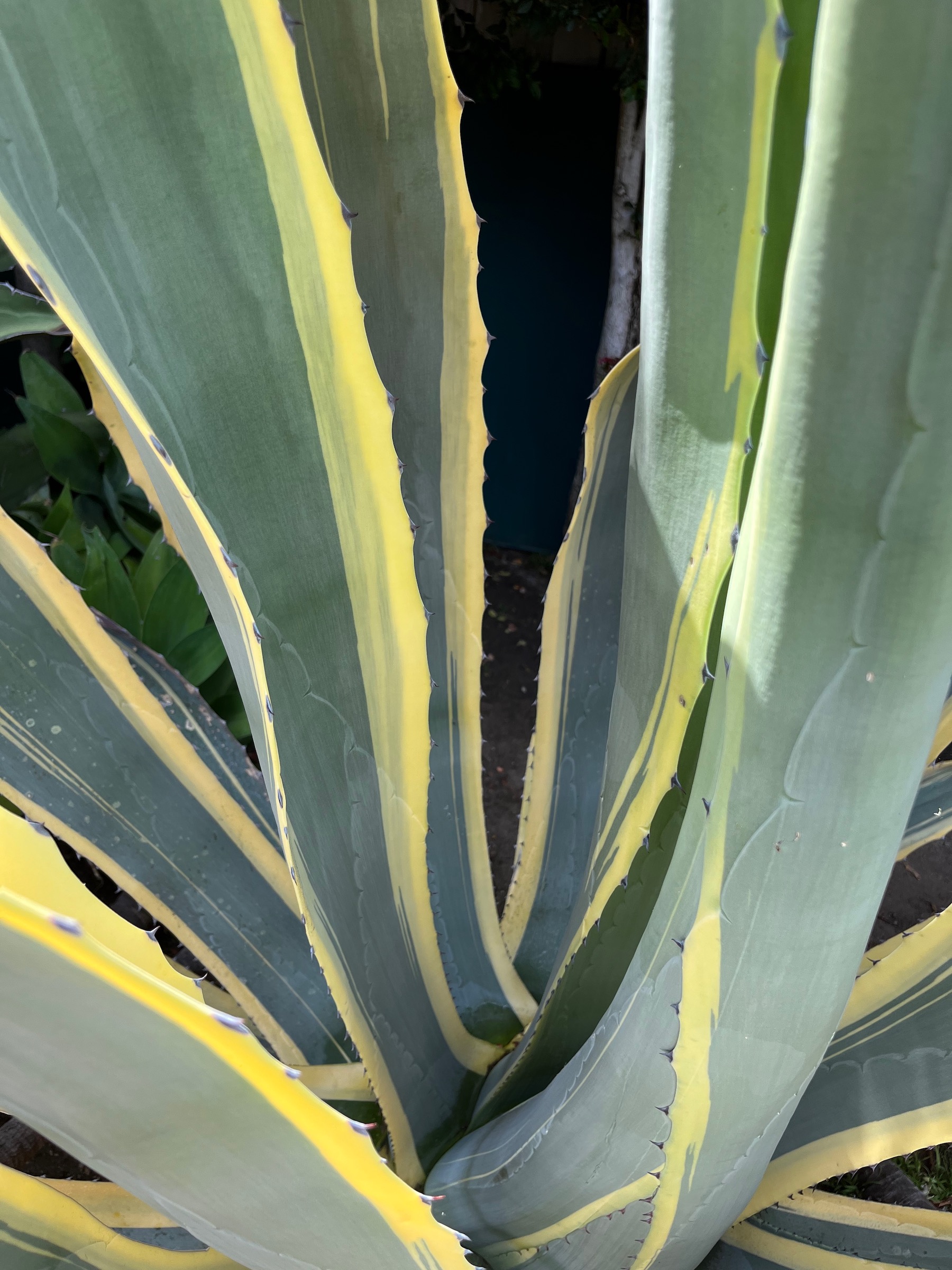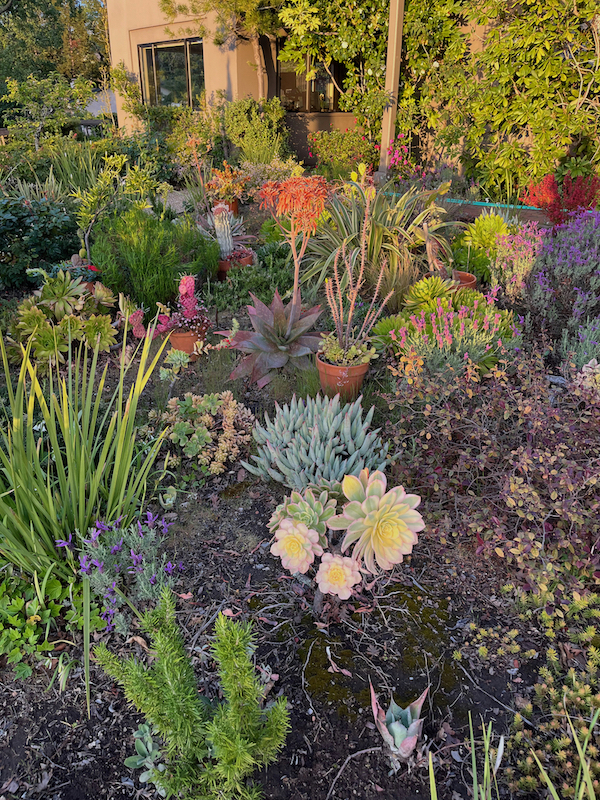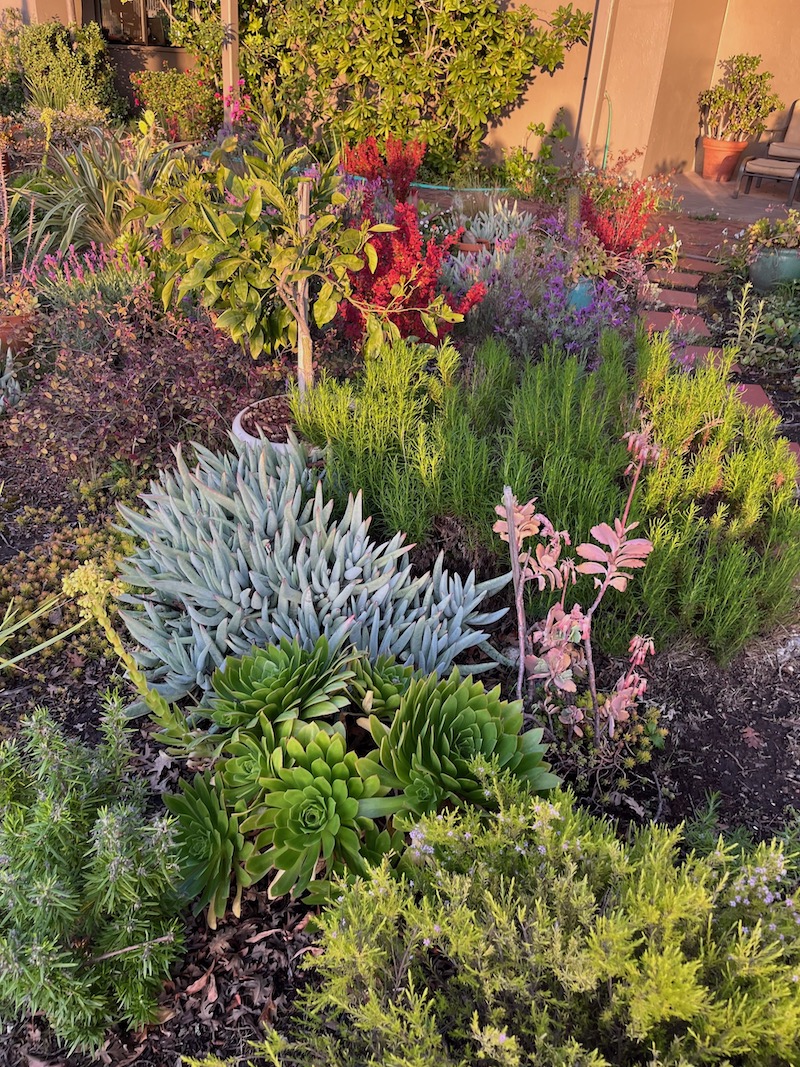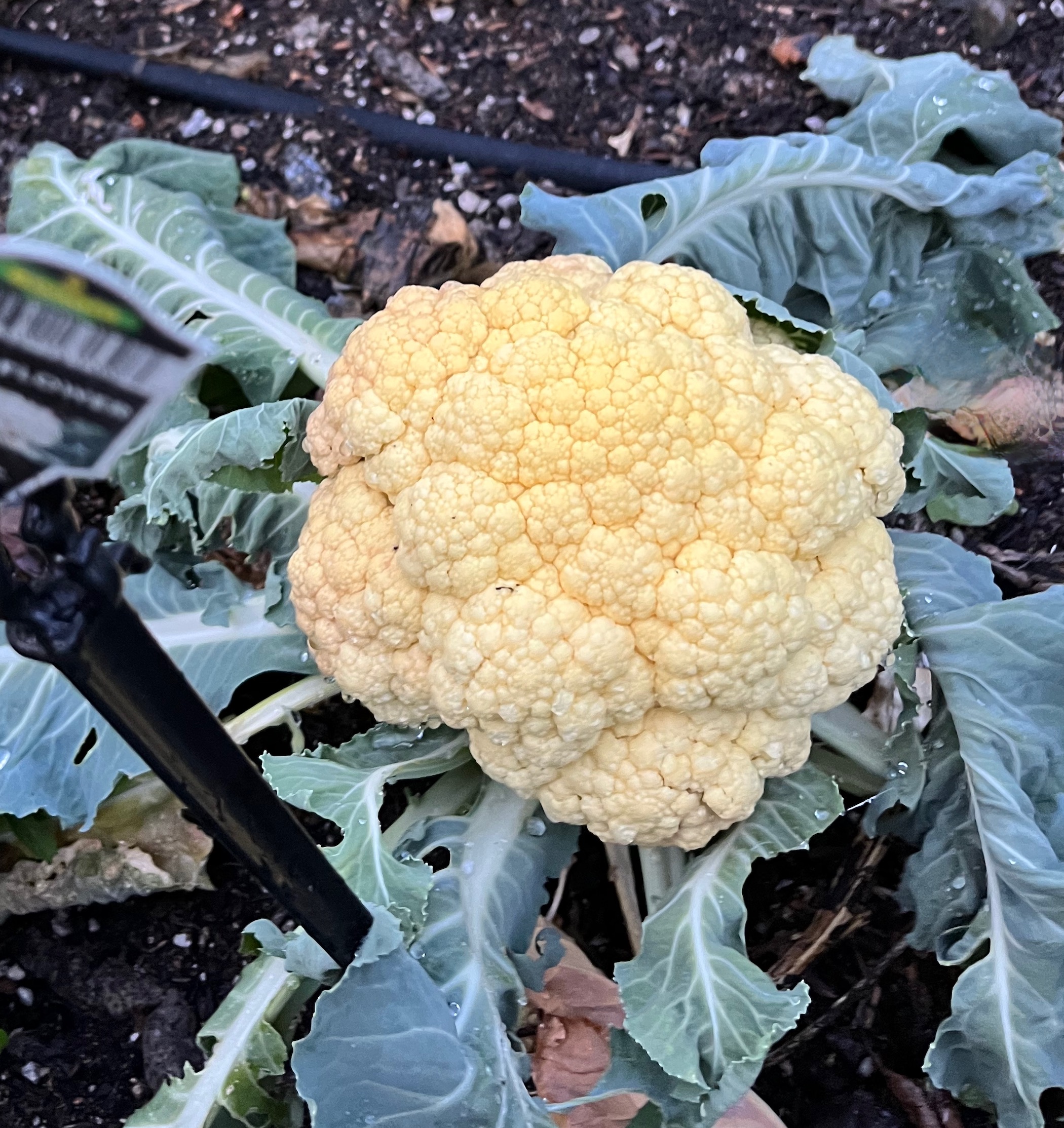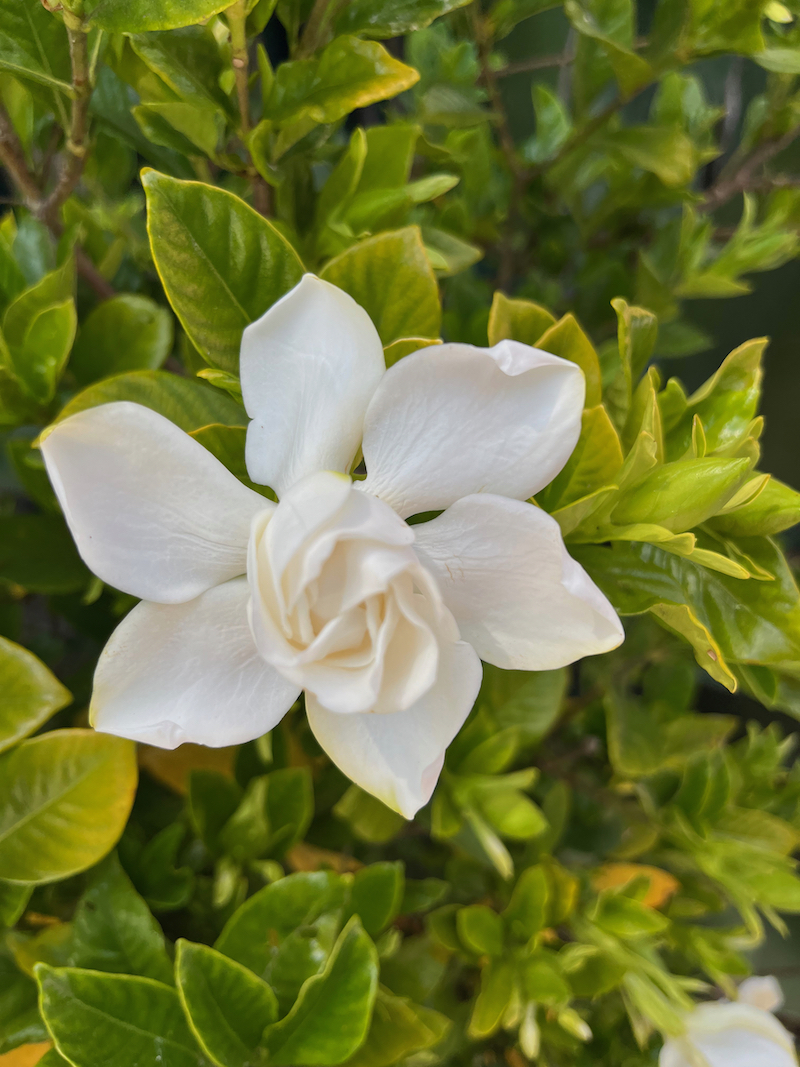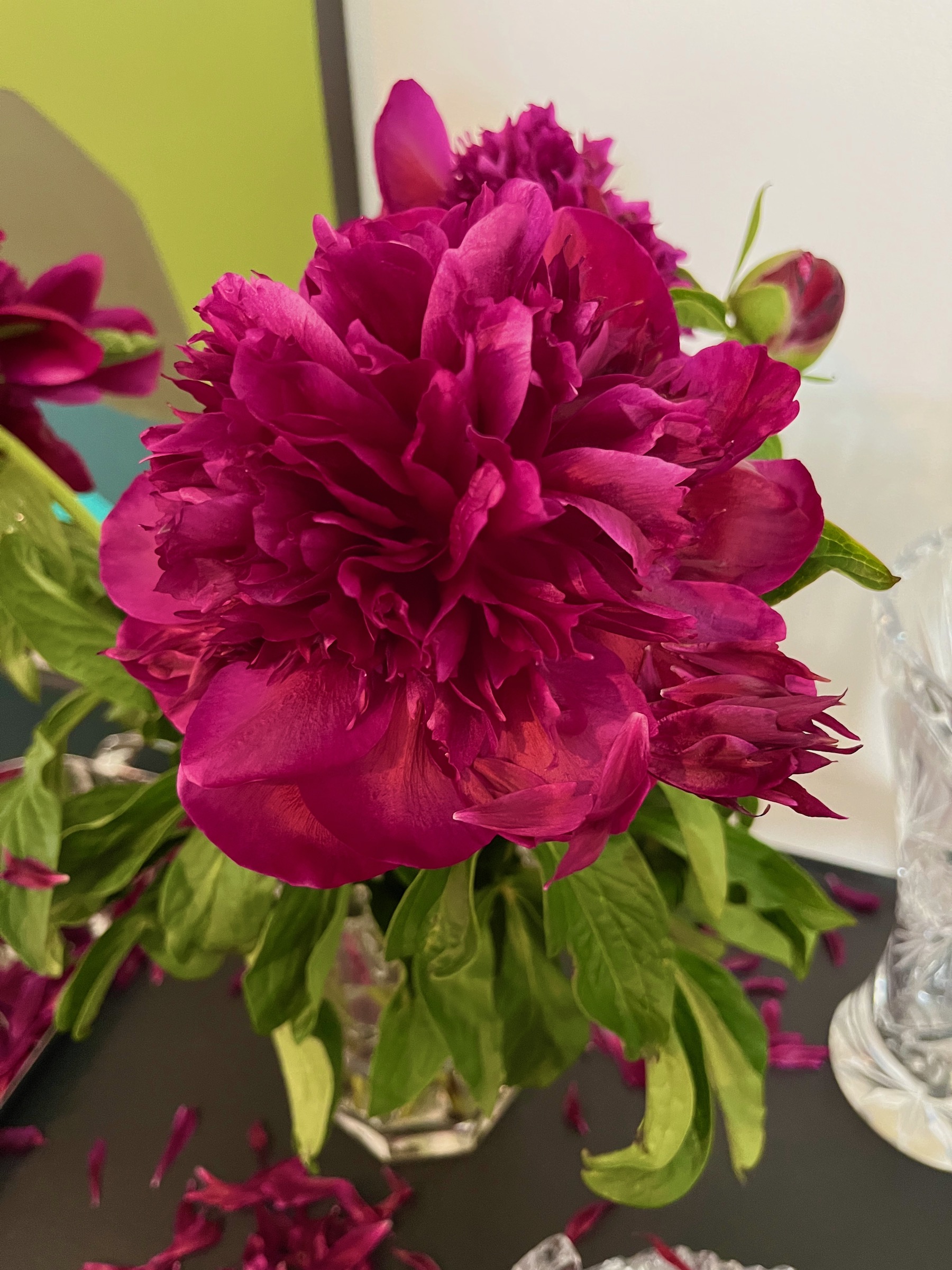By Cynthia Brian
“We Californians are constantly accused of not having seasons, but we do. We have fire, flood, mud, and drought.” Phyllis Diller
It’s that time of the year again. School is out. The weather is warming. The drought continues. We fear fires. Flood and mud are distant memories. Because of water restrictions, many homeowners are seeking alternatives to thirsty vegetation that demand a constant drink. Enter succulents.
Succulents have fleshy, thick leaves that store water and thrive in warm, dry conditions. They are very low maintenance, prefer dry conditions, and enjoy copious amounts of sunshine. Cactus are succulents, although most gardeners prefer succulents that do not have spines, stickers, or prickly pokes. Succulents are beautiful and come in a range of colors including green, silver, orange, yellow, purple, lavender, pink, red, bronze, and mixtures. The more sunlight they receive, the more colorful they become. Many of the fleshy leaves are arranged in rosettes. Succulents are easy to propagate through cuttings. Sometimes planting a single leaf will result in a new succulent. They have shallow roots and can be packed together for instant impact. Arranging succulents in swaths shows off the varying colors, textures, and forms resulting in a tapestry of interest. Replacing a lawn with an artful array of various succulent species, sizes and shapes is an attractive and waterwise investment. Succulents may be mixed in a garden with other drought-resistant floras such as lavender, lambs’ ear, verbena, sage, or lantana.
Aeonium, Sedum, Echeveria, Sempervivum, Agave, and Aloe are just a few of the over five thousand species of succulents that will thrive in our landscapes.
Aeonium
Native to the Canary Islands, the thirty-five species of aeoniums tolerate a bit of shade with rosettes that grow taller (some to five feet or more) than ground-hugging succulents. Cascading over containers, they add drama to a patio setting, especially with their conical clusters of flowers that bloom on eight-inch stems.
Sedum
Mostly concentrated in Mexico and Europe, sedums are extremely hardy and useful in dry gardening. They are terrific in containers and often spill over. As ground covers, many are low growing, making them perfect for rock gardens.
Echeveria
Always formed in rosettes and mostly derived from Mexico, these colorful succulents can be frilly, rounded, or fuzzy, boasting an arching stalk of a bell-shaped flower.
Sempervivum
Native to Southern and Central Europe, sempervivum is a succulent rosette. The plants flower only once before dying making this genus monocarpic. Before dying, they produce a pup or chick around their mother plant.
Agave
Tequila is made from the agave plant, although the sap from the agave is toxic to both humans and pets. Hailing from North America, these rosette-shaped succulents have long, spiny tips with specimens that grow to ten feet in height and diameter as well as dish-size varieties. They produce a tall flower stalk from their center at maturity, which could be decades, then die.
Aloe
There are hundreds of species of aloes originating from Africa or Central America. Some are prickly, others thick and fleshy. The Aloe Vera is used for medical applications and is a “must-have” plant for households, especially useful by squeezing the juice from a leaf on a cut or burn.
To get ideas on creating a garden using succulents and other drought-tolerant plants, an enlightening excursion to the natural setting of the Ruth Bancroft Garden in Walnut Creek is encouraged. www.RuthBancroftGarden.org. Specimens may be purchased at their nursery and gift cards are available through their online store.
Goddess Gardener’s Guide
ü Besides boasting about succulents, I am excited that I have been harvesting cauliflower. If you haven’t tried growing cole crops, I highly suggest doing so. I grow cabbage, Brussel sprouts, kale, and cauliflower. All parts of the plants are edible, and they are superfoods.
ü In full bloom now, peonies and gardenias are a couple of my all-time favorite flowers to add to bridal bouquets as well as flower arrangements. Peonies only last a few days in a vase; however, their impact is dramatic. A single gardenia fills a room with glorious fragrance.
ü June officially begins the fire season. Make sure to remove debris from around structures and cut wild grasses to the ground. Most importantly, get your Go Bag ready and prepare for an evacuation, if necessary.
ü We are in a serious drought with mandatory water restrictions. Maintain your landscape by watering deeply but infrequently in the morning and evening.
ü Perhaps a pot of peonies or a few containers of succulents would be an attractive gift for a garden-loving, water-saving dad for Father’s Day?
Relish a succulent summer and stay safe.
Happy Gardening. Happy Growing. Happy Father’s Day!
Cynthia Brian, The Goddess Gardener, is available for hire to help you prepare for your spring garden. Raised in the vineyards of Napa County, Cynthia is a New York Times best-selling author, actor, radio personality, speaker, media and writing coach as well as the Founder and Executive Director of Be the Star You Are!® 501 c3. Tune into Cynthia’s StarStyle® Radio Broadcast at www.StarStyleRadio.com.
Buy copies of her books, including, Chicken Soup for the Gardener’s Soul, Growing with the Goddess Gardener, and Be the Star You Are! www.cynthiabrian.com/online-store. Receive a FREE inspirational music DVD and special savings.
Hire Cynthia for writing projects, garden consults, and inspirational lectures.
Cynthia@GoddessGardener.com


